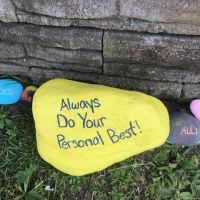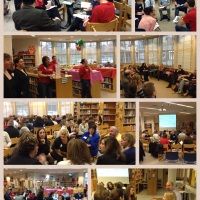The holidays are approaching. Working with middle school kids on the days preceding a vacation can be particularly challenging. How do you make it work?
This post is a collaboration between a group of middle school leaders from across the country. Periodically, these passionate and dedicated middle school principals share their thoughts on issues of relevance for those “in the middle”.
Donald Gately. Middle School Principal, Long Island
This is a great question because, frankly, middle school students are nothing if not temperamental. Their moods shift frequently, often without warning. The days preceding a vacation can be the most challenging period to work with young adolescents. Jennifer Gonzalez calls these, Lame Duck School Days, “Those days when technically we’re still in school, but because it’s right before vacation, the end of the school year is near, or we’re in the middle of standardized testing, those class hours don’t have the same instructional potential as your average school day.”
 Smart middle school principals try to keep their calendars as open as possible on the days before vacations, knowing that anything and everything can come up. Students have more energy on these days because of the excitement of soon enjoying time off from school, sleeping late, not having homework. Another group of students might act out or display signs of anxiety and depression because school is their “safe place”, the place that they are free from the problems that characterize their home lives. The day before vacation, it is not uncommon for certain kids to act out, or even express feelings of depression or “self-harm”. Naturally, these expressions are too often articulated about 20 minutes before the school buses are set to roll and a frantic principal and school psychologist have to make a decision whether or not to put the child on a bus to go home.
Smart middle school principals try to keep their calendars as open as possible on the days before vacations, knowing that anything and everything can come up. Students have more energy on these days because of the excitement of soon enjoying time off from school, sleeping late, not having homework. Another group of students might act out or display signs of anxiety and depression because school is their “safe place”, the place that they are free from the problems that characterize their home lives. The day before vacation, it is not uncommon for certain kids to act out, or even express feelings of depression or “self-harm”. Naturally, these expressions are too often articulated about 20 minutes before the school buses are set to roll and a frantic principal and school psychologist have to make a decision whether or not to put the child on a bus to go home.
As an inexperienced middle school leader, I would try my best on the days before a vacation to keep a lid on the pot. As you might imagine, it didn’t work. Just as you can’t hold down the cover on a pressure cooker with your hands, you can’t hope to squelch adolescent enthusiasm by increased supervision, threats, and consequences. I’ve learned to channel the energy of students on these days so that learning continues to take place within the context of the excitement and joy that students are feeling.
The day before the winter break, our teachers organize “Student-Led EdCamp”. Students choose the topics they will facilitate and learn about with each other. Check out this video of kids populating the session board in anticipation of EdCamp in 6th grade. Kids facilitated sessions on juggling, waffle making, infectious diseases, how to create YouTube content and many other topics of interest to young adolescents. The kids are excited about this participant-driven learning and they probably learn more on these days than they do on school days that aren’t “lame duck days”.
Brenda Vatthauer, Middle School Principal, Hutchinson, MN
We often need a brain break especially the day before the end of a quarter, semester, trimester, holiday, etc. The day before a vacation can be rewarding, yet challenging. Middle school students look forward to spending time with friends and wrapping up a unit of learning with anticipation of enjoying time away from school. But wait, there are  segments of students who do not welcome an upcoming break from school and actually dread it. Time away from school, to some, may not be a positive experience. Many factors play into this which may include homelessness, family separations and challenges, poverty, loneliness, mental health, etc. This is not only apparent in students, but sometimes with staff also.
segments of students who do not welcome an upcoming break from school and actually dread it. Time away from school, to some, may not be a positive experience. Many factors play into this which may include homelessness, family separations and challenges, poverty, loneliness, mental health, etc. This is not only apparent in students, but sometimes with staff also.
How do administrators make the day before a break, a Lame Duck School Day, meaningful?
1) Gather input from the Leadership Team. Input, input, input is necessary.
2) Gather input from students. Student voice is valued for planning the day before break.
3) Gather parent input. Utilize parents and the community as partners.
Start with a focus question, “How can we make the day before a break meaningful to everyone?” This would include wrapping up a segment of learning and building a positive school culture at the same time. Utilize input to draft a plan.
*Make it fun.
*Think outside the box.
*Involve community partners.
*Allow planning time and planning with a team.
*Reflect on the needs of the “whole child.”
Keep in mind the activity you plan and carry out will have a lasting impression for students and staff. You will be setting a trend, whether in grade-level teams, blocks or whole school groups. The outcome and memories students keep will be long-lasting. Down the road, you may hear “Remember that fun day we had before our holiday break in 7th-grade when……”
Learning doesn’t have to be traditional, learning can occur on Lame Duck School Days before a break if planned and executed in a meaningful way.







You must be logged in to post a comment.